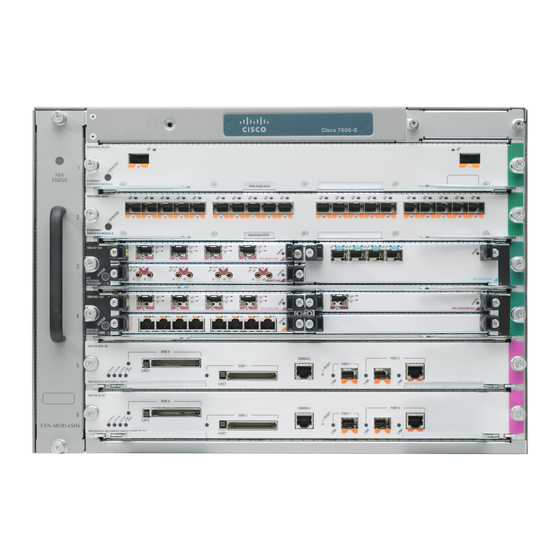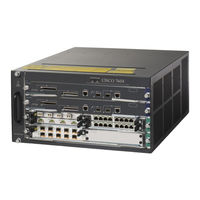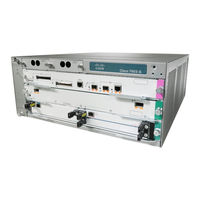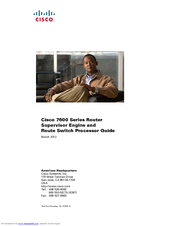
Cisco 7606 Manuals
Manuals and User Guides for Cisco 7606. We have 6 Cisco 7606 manuals available for free PDF download: Configuration Manual, Installation Manual, User Manual, Brochure
Cisco 7606 Configuration Manual (1011 pages)
IOS Software Configuration Guide
Brand: Cisco
|
Category: Network Router
|
Size: 12.17 MB
Table of Contents
Advertisement
Cisco 7606 Installation Manual (324 pages)
7600 Series
Brand: Cisco
|
Category: Network Router
|
Size: 11.91 MB
Table of Contents
Cisco 7606 Installation Manual (138 pages)
Router Module
Brand: Cisco
|
Category: Network Router
|
Size: 5.58 MB
Table of Contents
Advertisement
Cisco 7606 User Manual (98 pages)
Router Supervisor Engine and Route Switch Processor
Brand: Cisco
|
Category: Network Router
|
Size: 1.18 MB
Table of Contents
Cisco 7606 User Manual (28 pages)
User Guide
Brand: Cisco
|
Category: Network Hardware
|
Size: 1.52 MB
Table of Contents
Cisco 7606 Brochure (8 pages)
7600 Series Internet Router
Brand: Cisco
|
Category: Network Router
|
Size: 0.85 MB





